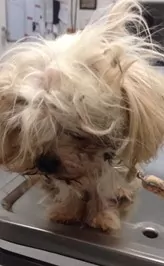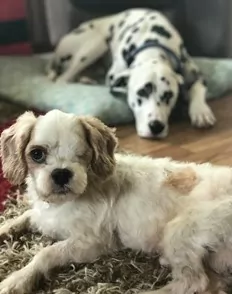Hi Dr. Meg, please introduce yourself to our readers.
My name is Meg. I’m 27 years old and qualified as a veterinarian in 2015, where I worked as a small animal and equine vet for 2 years. I currently live and work as a locum in the United Kingdom, having been lucky enough to have the work take me all around the country in the last few years.
Why did you decide to become a vet?
Being a vet was something that I had always wanted to do, ever since I was a child. Despite being tempted by a few other careers, I always came back to being a veterinarian. Vets had always played such a pivotal role in our family’s life, and I was drawn to the idea of being able to help animals and their owners.
It also seemed like the perfect blend of science, practical skill and stimulation; there is always something different about each day, and you never quite know how it’s going to go! A big bonus to the studies was also its flexibility in being able to take your education around the world. Once armed with it, it can never be taken away, which I feel extremely grateful for.
Where did you study?
I studied at James Cook University in Townsville, Australia, which is the closest veterinary school to my hometown. It was a great place to study. There was a large focus on large animal medicine being a regional part of Australia and there was a heavy focus on the practical elements of being a vet which was paramount in setting us up for our careers, in whatever focus our careers took!
You also develop a great community amongst your colleagues who will be your friends and greatest supports for life.
Tell us more about your work as a veterinary surgeon?
After doing a mixture of small animal and equine work in the first 2 years, I ended up working in small animal practice only in the last couple of years. As my time in the profession progressed I started to find myself becoming more passionate about client education and communication.
In my first few years I was happiest in the surgery room, however now I find myself enjoying the consulting room; fostering those longer term relationships and managing the more chronic health issues. I don’t quite know yet where my career will take me, but I’m starting to sense that it will go somewhere I least expect it to!
Since you have been working in both Australia and the UK, can you note any differences? Do you prefer one place to the other?
I worked in rural Australia when I first graduated. We were at least five hours from the closest referral hospital, which meant that we practiced in a way where we ‘did what we could with what we had.’ There was an extremely high surgical and emergency caseload, and it was the best learning environment I could have had as I gained so much experience in such a short time.
In that sense, working in the United Kingdom is very different, as most referral hospitals are within reach of owners, which makes it a different environment to practice in. And although you may not get to do as many things yourself, it is a privilege to be able to offer clients the option of referring easily and to learn from the amazing specialists who have so much knowledge.
They both have their positives, but I’ve always said that our out-of-hours workload in Australia is filled with a lot more scary cases; snake bites, tick paralysis, toad poisoning- just to name a few!
There are so many memorable and strange cases that stick with you your entire career, but my most memorable is a very personal one. In my first year of qualifying I got a call in the middle of the night about a little dog that had been found in a terrible state, tied to a tree.

He was emaciated, had maggot-infested wounds, an abscessed (and absent) eye and was so weak he could barely stand. I wasn’t sure if he would be very responsive to treatment, but I quietly cleaned him up, treated his wounds, started him on some medications, and popped him in a bed with some food. His tail gave a little thump and he ate his food happily, contentedly curling up for a sleep.

He recuperated in the clinic, looking pretty dapper after his first bath and groom, and underwent surgery and treatment. A month later, little Sir Bartholomew was well enough to be flown across the country to my mother; where he is now the proud boss of the family, owning two large dalmatians and three humans.

[simple-author-box]
